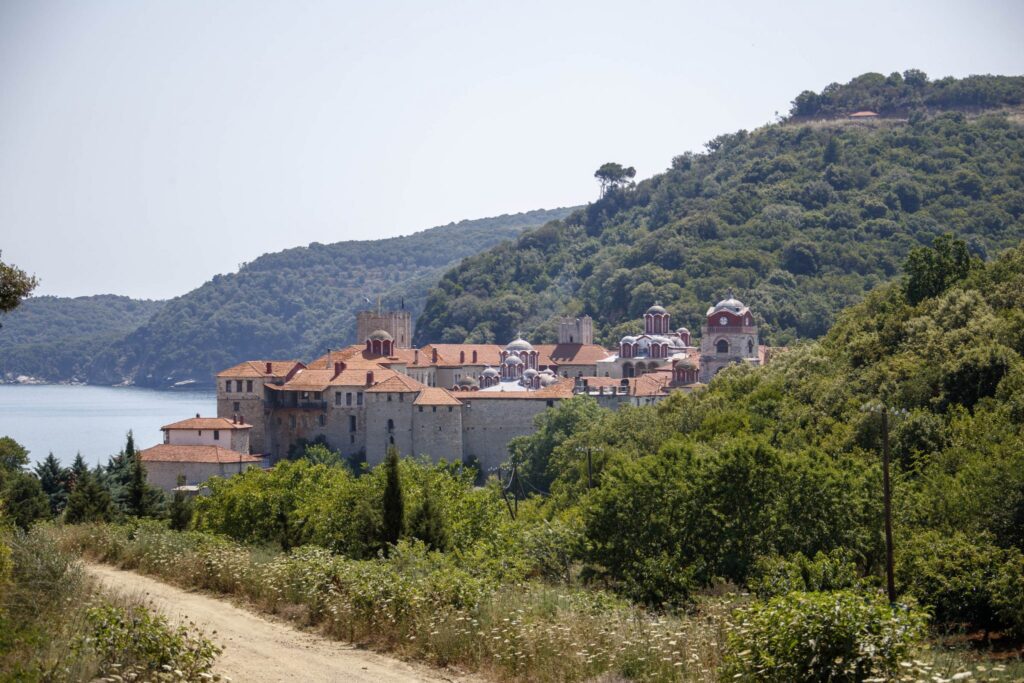The Esphigmenou Monastery (Greek: Εσφιγμένου) is located on the northeastern coast of the Athos Peninsula in northern Greece close to the Monastery of Chilandari. It is ranked eighteenth in the hierarchical order of the twenty monasteries located on the peninsula. As is the case with the other institutions on Mount Athos, life at Esphigmenou is cenobitic.
Athonite tradition attributes the foundation of the monastery to the Byzantine Emperor Theodosius II and his sister St. Pulcheria during the 5th century; the remains of this early monastery, having been subsequently destroyed by a huge rock that fell from the nearby hills, can still be found 500 metres from the existing monastery. However, historical and archaeological evidence cannot safely confirm this tradition and, therefore, the precise time of the monastery’s foundation, as well as its founders, cannot be positively identified.
The evidence can however confirm that as early as the late 10th or early 11th century the monastery existed. It is mentioned in at least three manuscripts. The monastery is referred to in a letter by Saint Paul of Xeropotamou dating from 1016. The will of the monk Demetrius of Chalki, dating from 1030, is signed by a monk who calls himself “Theoktistos monk and abbot of Esphigmenou monastery”. Finally, the monastery is mentioned in the second Typicon of Mount Athos in 1046.
The monastery greatly prospered until the Ottoman conquest. Many Byzantine emperors, such as John V Palaiologos, contributed to this prosperity, as did other Orthodox rulers such as Serbian Emperor Stefan Dušan and Serbian Despot Đurađ Branković.
In 1655, Czar Alexis I of Russia gave the monks permission to travel throughout his lands every five years to raise funds for the monastery. During the same period the rulers of the Danubian Principalities also made significant contributions to the monastery. During the early 18th century, Bishop Gregory of Melenikon made donations to the monastery and eventually become one of its monks, undertaking a renovation of the monastery. Also, Bishop Daniel of Thessaloniki took care of the monastery’s finances and, with the consent of the Athonite community and Patriarch Gerasimos III of Constantinople, made the monastery a cenobium. The relevant patriarchal edict was published in 1797 by Patriarch Gregory V of Constantinople, who also rebuilt the southern part of the monastery that had been ruined.
A series of competent abbots (Acacios, Euthymios, Theodoritos, and Agathangellos) greatly renovated and expanded the monastery, to the point where the current structures date almost exclusively from their time. The successor of Agathangellos, Lucas, founded an iconography school, which did great service to the monastery for many years.
The katholikon is dedicated to the Ascension of Our Lord. There are two chapels in the katholikon and seven outside of it. The monastery also has 13 chapels, eight inside the main complex and five outside.
View more photos HERE
- Source: asceticexperience.com
